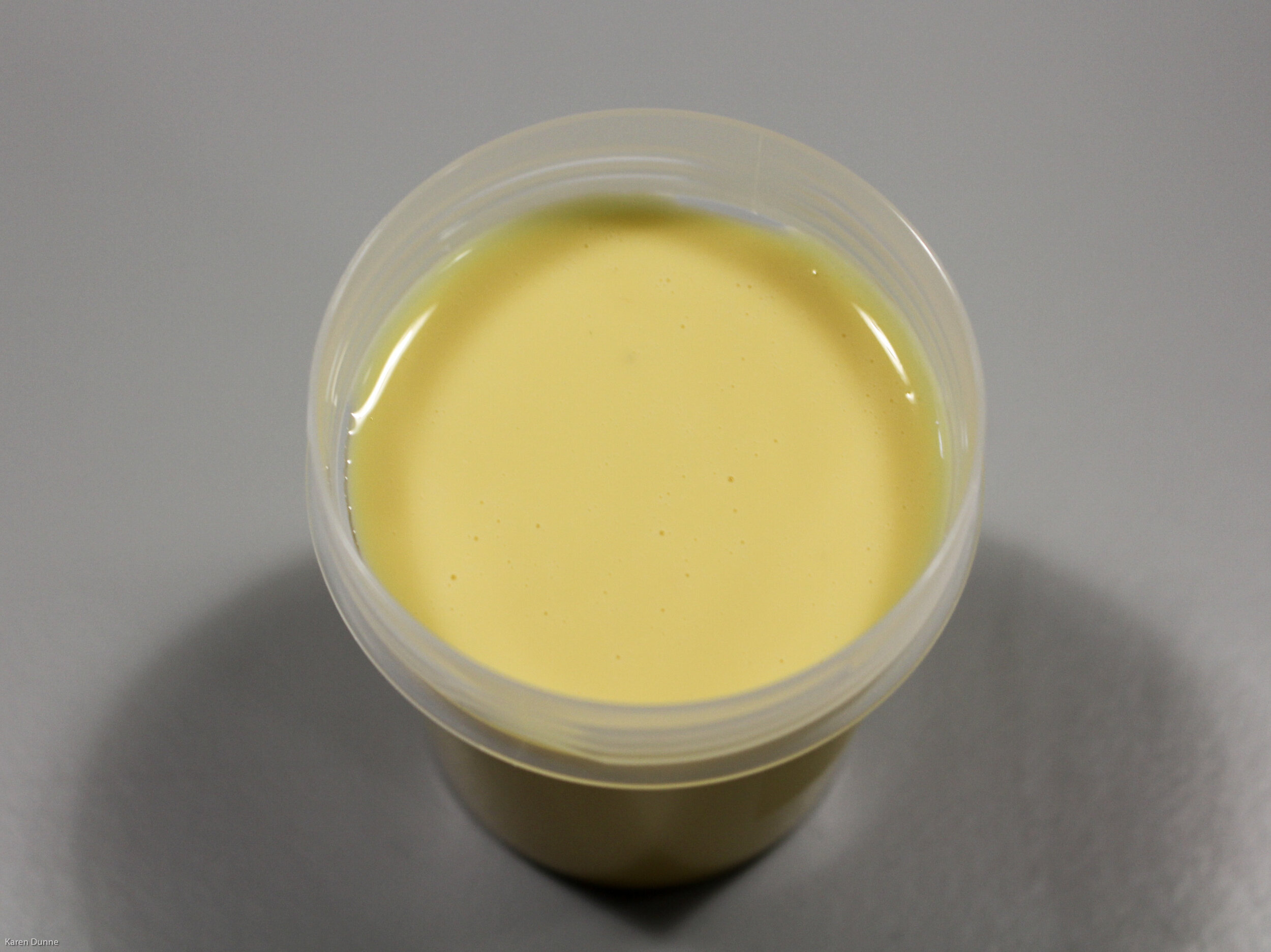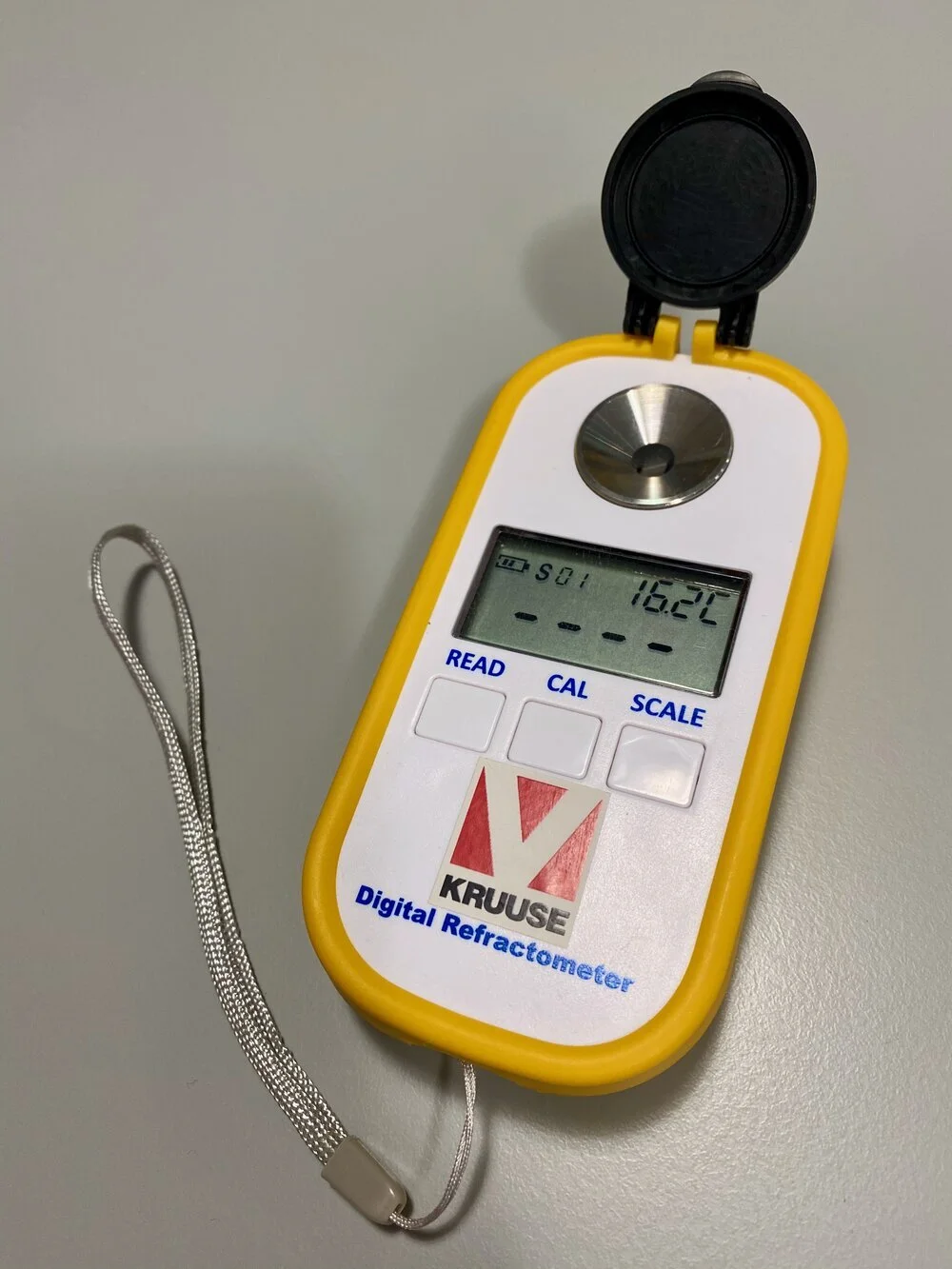Colostrum assessment
Good quality colostrum is vital to give newborn animals the best start in life
Colostrum assessment is a straightforward and valuable procedure.
What is colostrum?
Colostrum (or ‘beestings’) is the first milk produced by the dam after birth. It contains higher levels of antibodies, specifically immunoglobulin G (IgG), than the milk that will be produced for the rest of the lactation. These antibodies are vital in conferring adequate passive immunity from the dam to the offspring to protect it from illness and infectious disease during the first few weeks of life, while the newborn animal’s own immune system matures.
Colostrum is normally thicker and more yellowish in colour than regular milk (figure 1).
Antibody transfer
In some species (cats and dogs for example), IgG can be transferred from the dam to the offspring across the placenta, during pregnancy. This means that the animal already has some protection from disease at the time of birth. Due to the structure of the placenta in ruminants and horses, no antibody transfer occurs before birth. These animals are entirely reliant on an adequate intake of high-quality colostrum shortly after birth (Farrell, 2021).
IgG is a protein, and protein molecules are typically broken down by enzymes in the digestive tract before they are absorbed into the bloodstream. If this were to happen to the IgG in colostrum its ability to prevent disease would be lost. The cells lining the gut of the newborn animal are able to absorb IgG antibodies intact for a short period after birth. This transfer mechanism peaks at about six hours of age and then begins to decline rapidly from 12 hours. It is completely lost by 24 hours of age. There is therefore only a short window of opportunity for the IgG to make it intact into the newborn animal’s bloodstream to confer disease resistance (McCue, 2014).
Colostrum intake
A healthy newborn calf, foal or lamb should be on its feet and nursing from the dam within an hour of birth. Weak individuals, orphans or those that are to be bucket fed e.g. dairy calves may need you to administer colostrum to them. As a rule of thumb, the newborn animal should receive 10% of its bodyweight in colostrum within the first six hours life, split into two doses. So 4 litres for a 40kg calf, administered in 2 x 2 litre feeds (McCue, 2019).
Colostrum volume alone is not the only factor that should be considered, as the IgG concentration is highly variable. The IgG concentration will be lower if it is the dam’s first pregnancy. Dairy cows produce larger volumes of milk than beef cattle, so their colostrum is typically more dilute, and dams that are thin, sick, eating a low-energy diet in late pregnancy or have a chronic or painful condition e.g. lameness, will produce poorer quality colostrum.
Evaluating colostrum quality
Colour and consistency an unreliable indicators of IgG concentration and should not be relied on. Instead, IgG levels can be assessed by measuring the density of the colostrum, as a higher density correlates with greater IgG levels. Colostrum density can be easily assessed:
Brix refractometer
Digital refractometer
Colostrometer (also called a densimeter)
Brix refractometer
A Brix refractometer scale
A refractometer is a device that measures the density of a liquid by measuring how much a beam of light is bent (refracted) as it passes through it. A Brix refractometer has a single scale that is viewed by holding the refractometer up to the light and looking through it.
The scale typically reads from 0-30% (see image to the right) and the table below is used to assess the colostrum quality based on the Brix % obtained - see the slideshow for the testing procedure and sample readings.
Assessing colostrum quality (adapted from Shepherd 2010)
Assessing colostrum
The equipment needed and the procedure to use a Brix refractometer to assess colostrum quality are shown in the slideshow below.
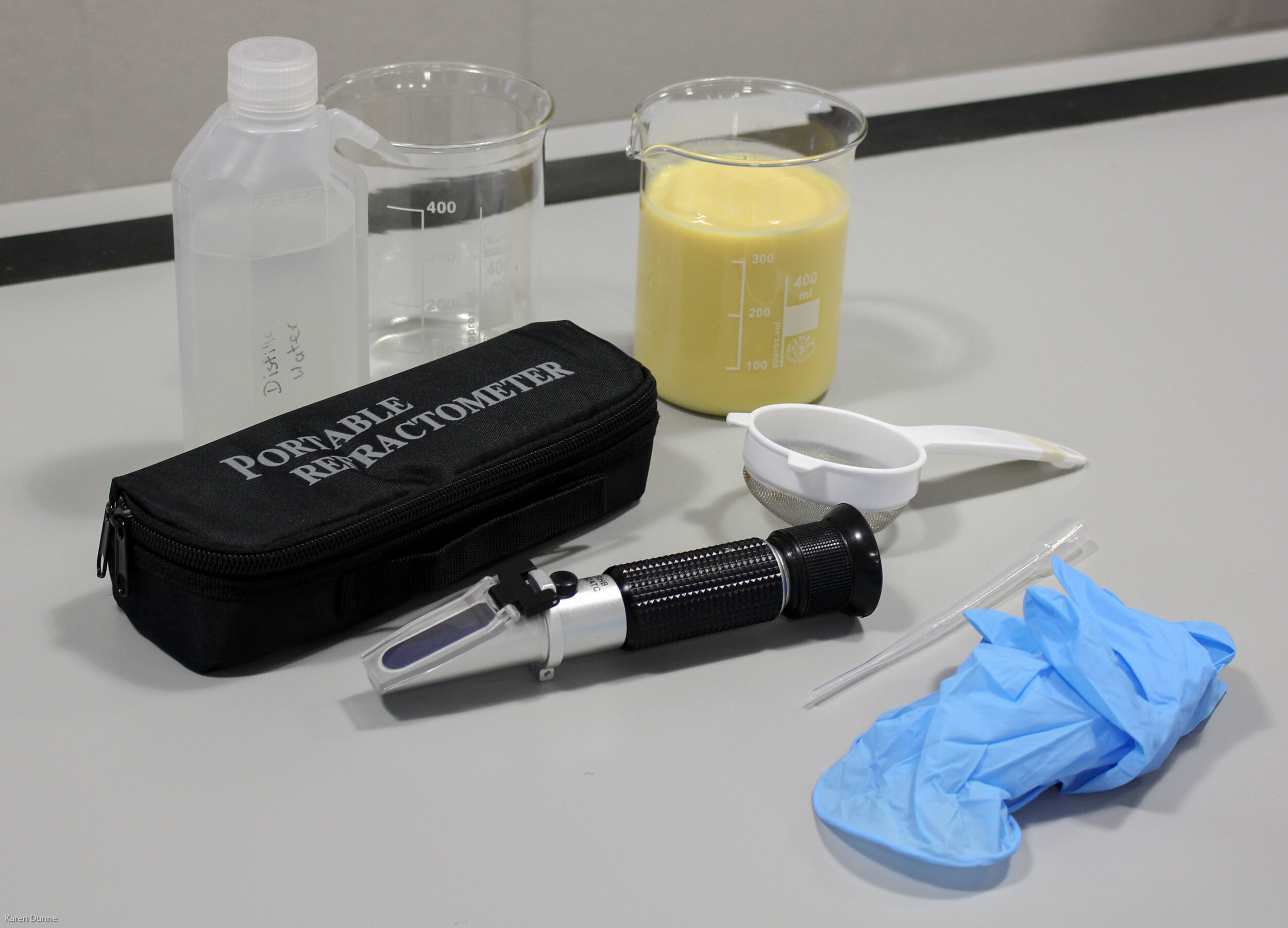
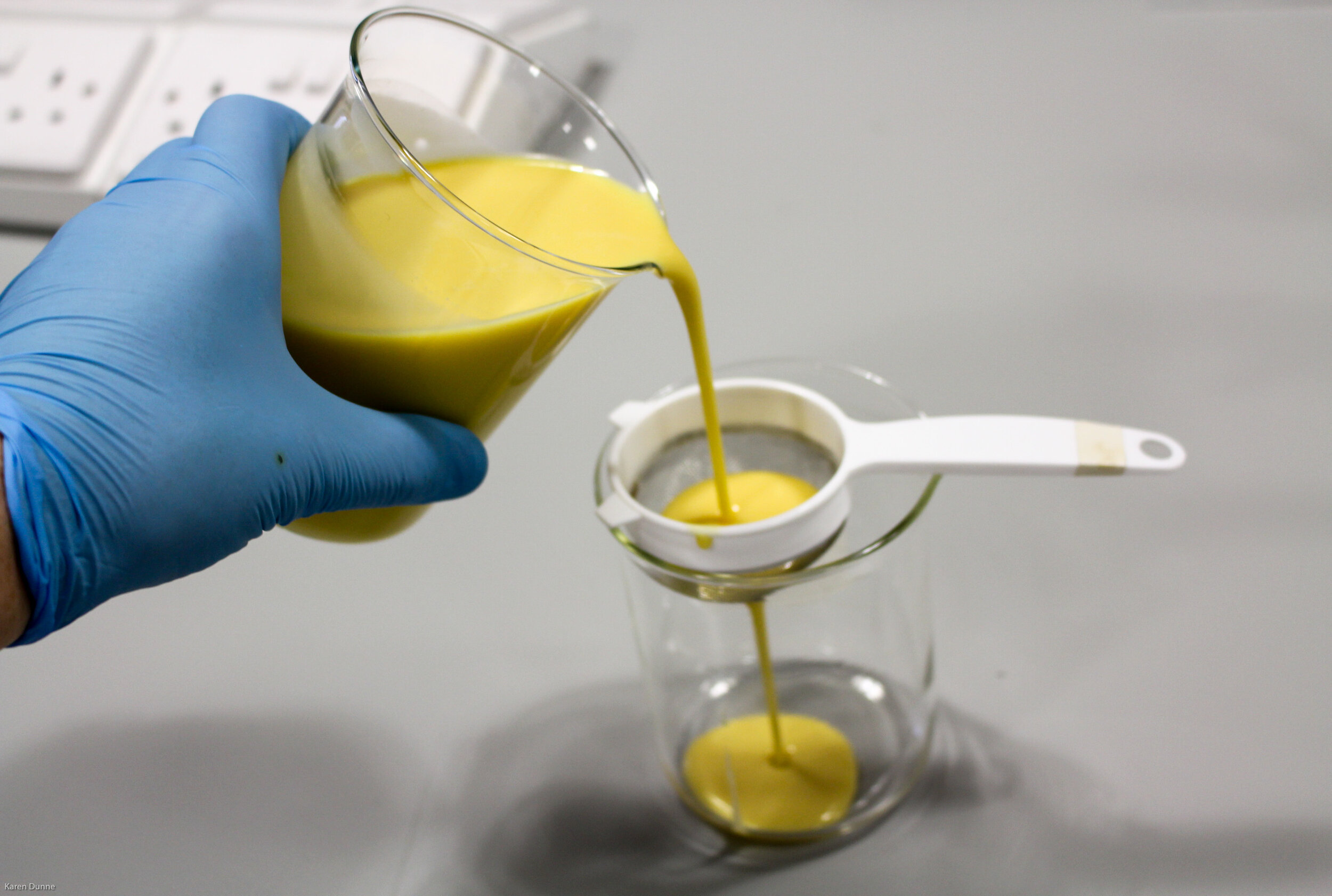
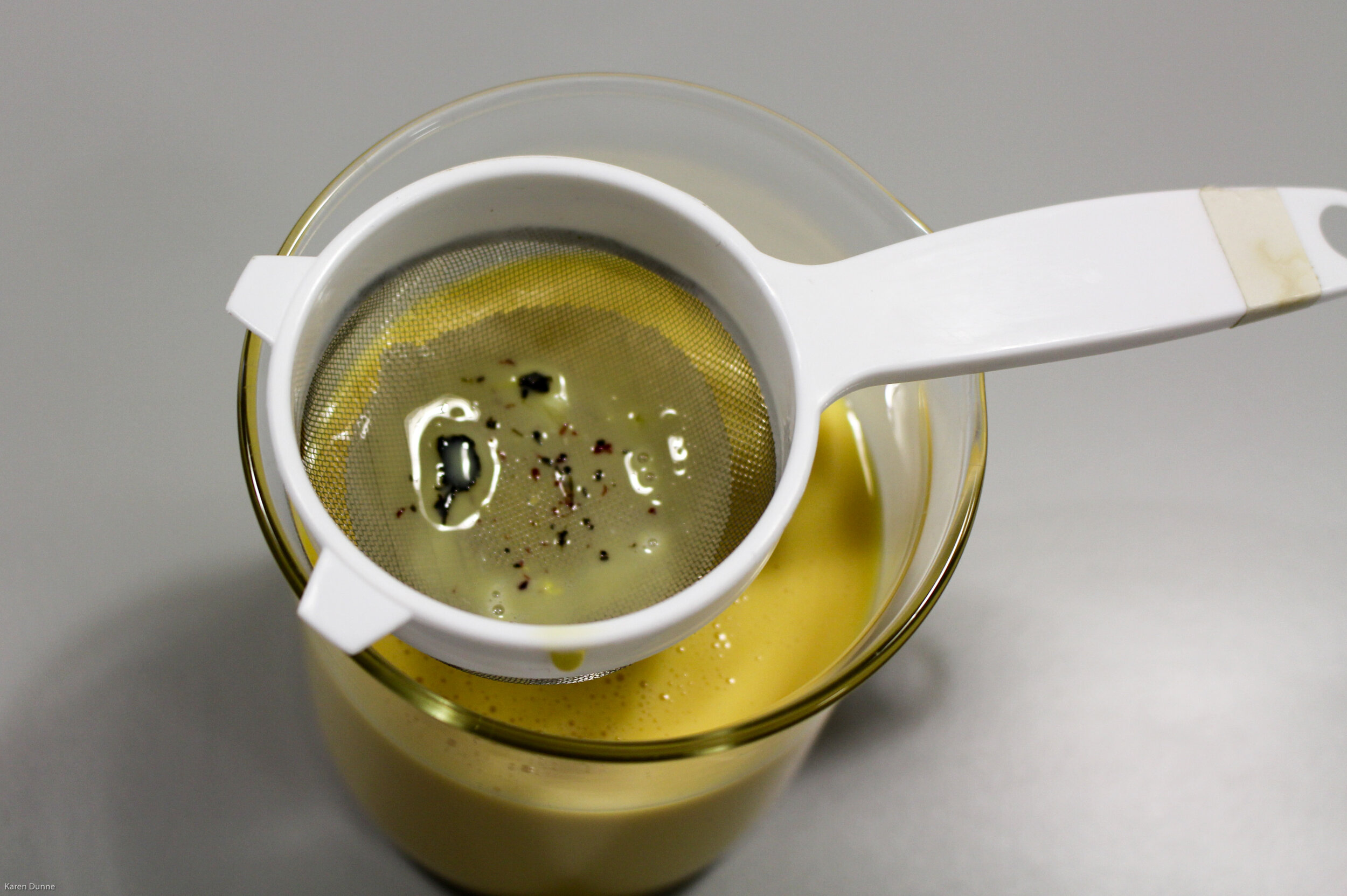


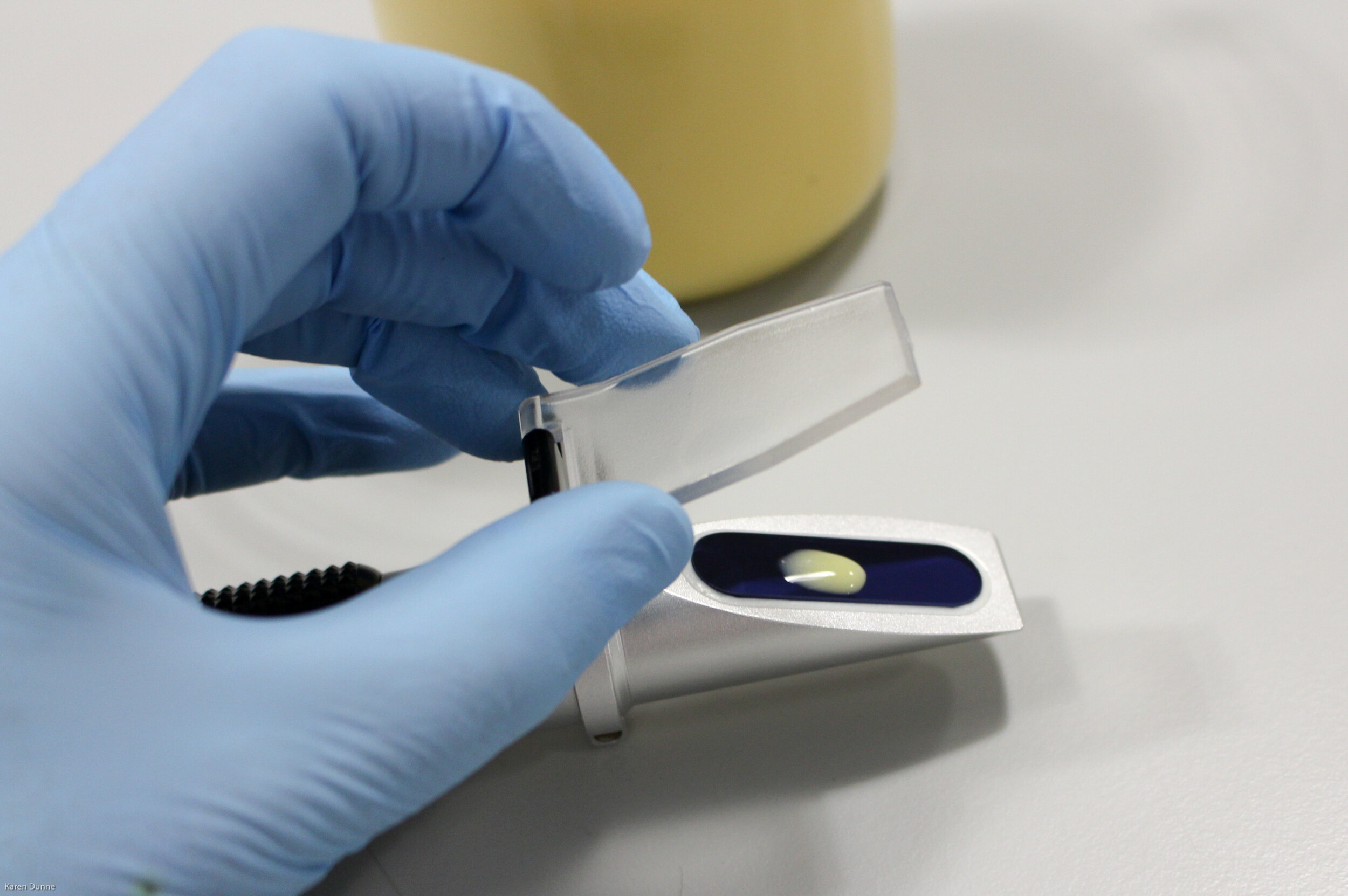

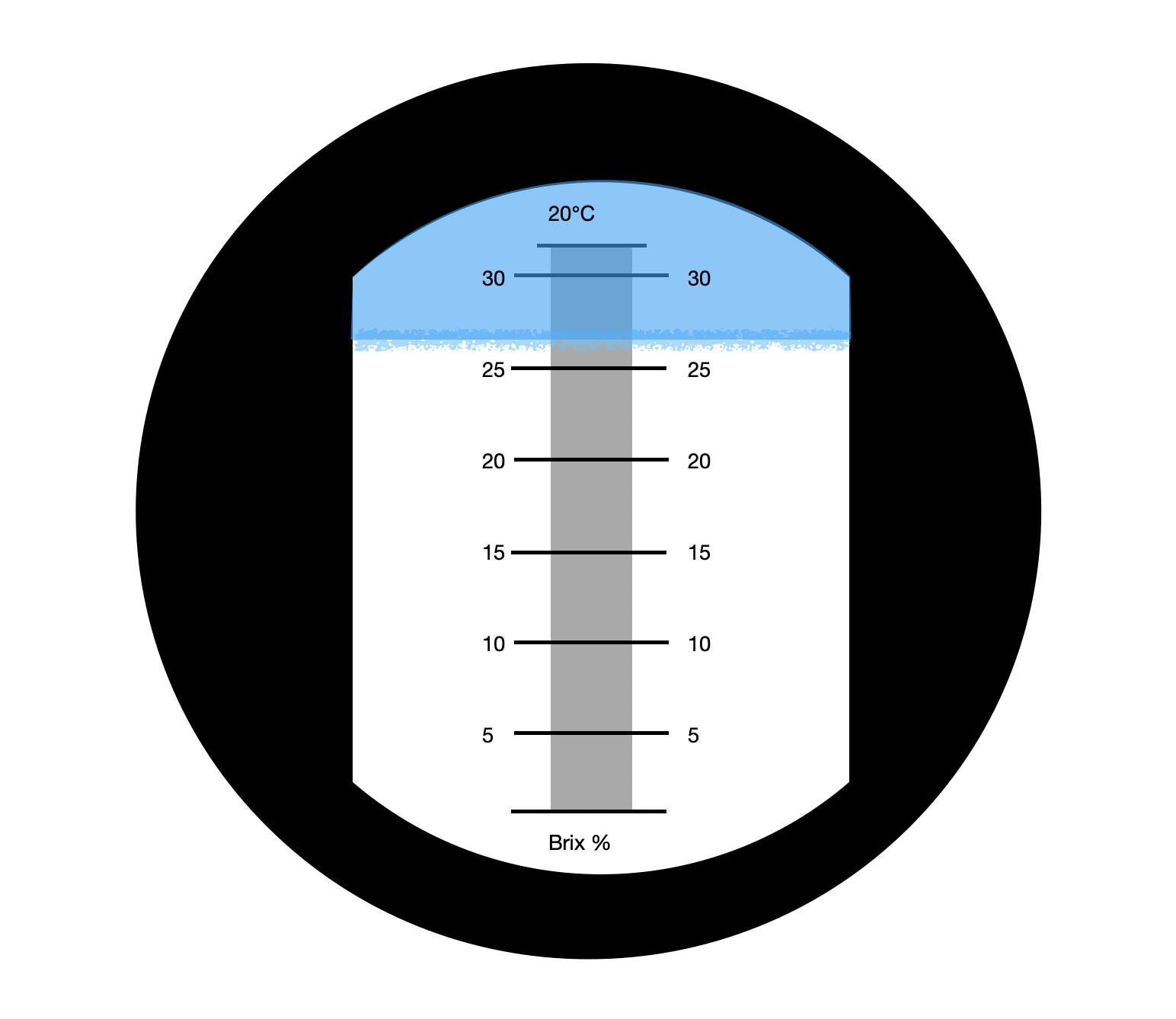
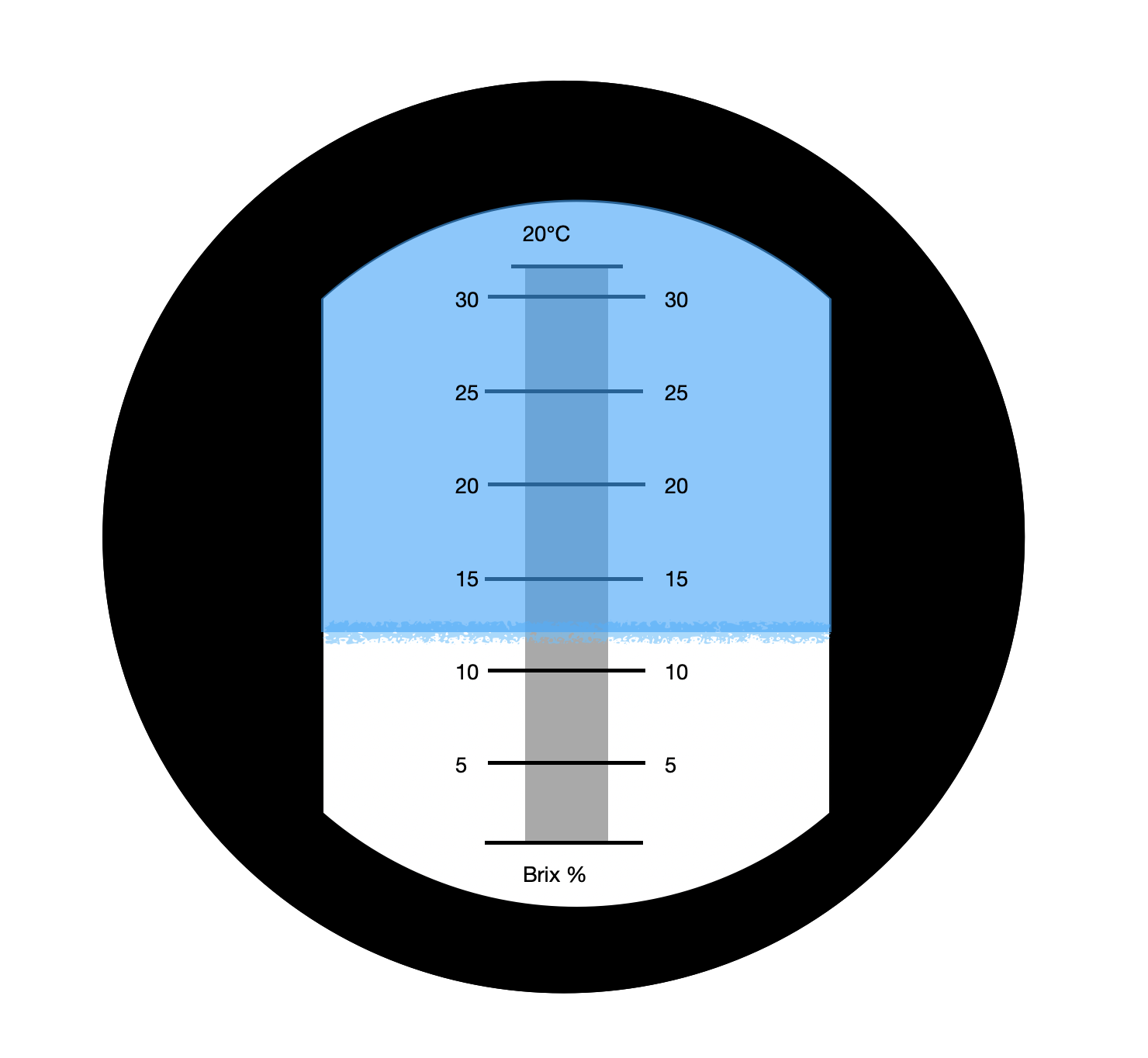
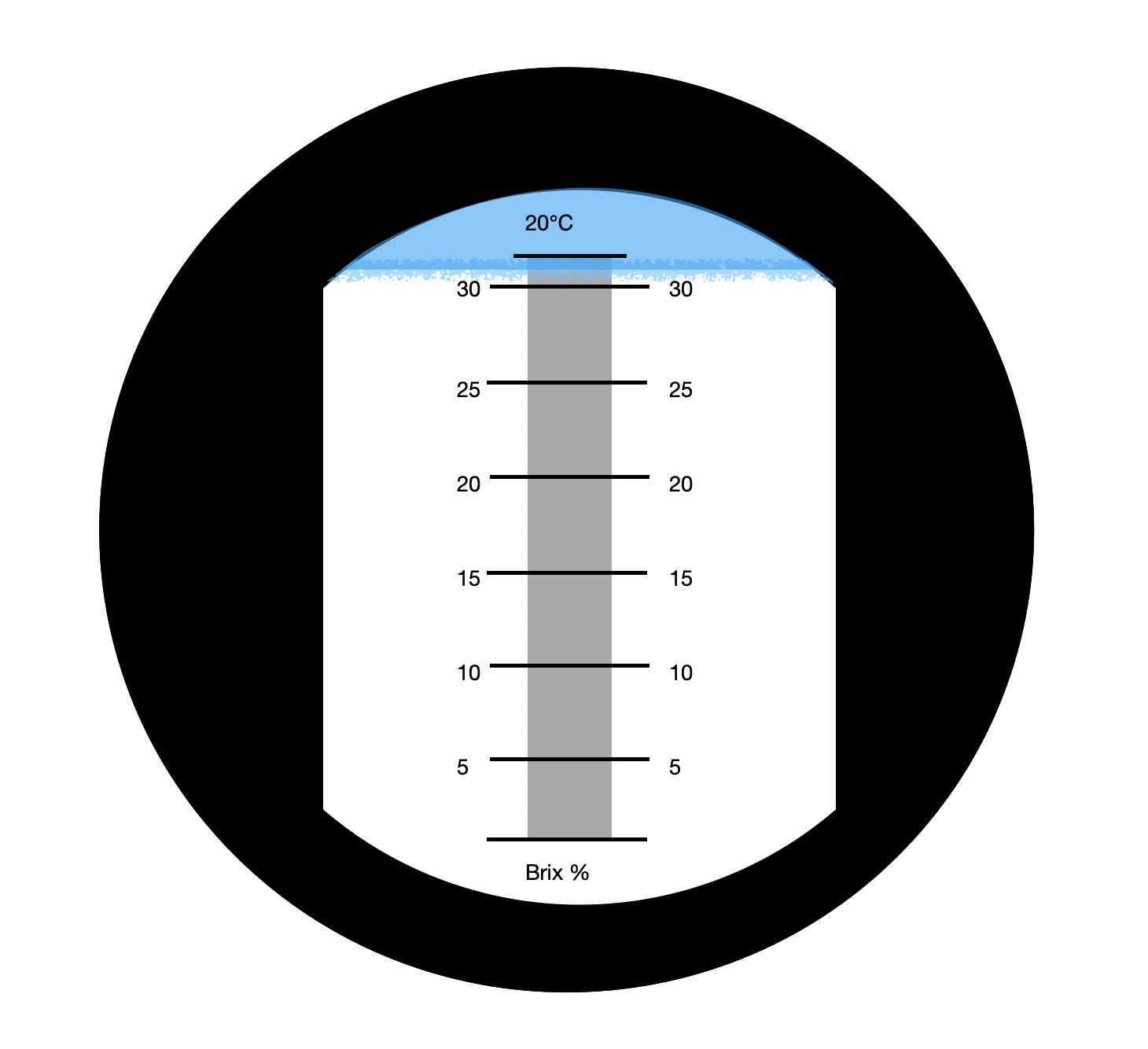
Digital refractometers and colostrometers
Two other options to assess colostrum quality are a digital refractometer and a colostrometer or densimeter. Digital refractometers are easy to use: you just need to place a few drops of well mixed colostrum in the testing well, close over the lid and the result is displayed on the screen after a few seconds. However, these instruments may give inaccurate readings at low temperatures, require batteries and are vulnerable to damage if dropped, so the Brix refractometer may be a more suitable option for use on farm or patient-side.
A colostrometer is a glass instrument that is placed in a graduated cylinder of colostrum. The higher the IgG concentration, the denser the colostrum will be, causing the colostromter to float higher in the cylinder. The colostrum quality is read off a coloured scale on the neck of the instrument (see video below). While accurate, these instruments require a much larger volume of colostrum (at least 30ml) than either of the refractometer models and they are very fragile and easily broken.
A digital Brix refractometer
Colostrum is placed in the circular well and the quality reading is displayed on the screen as a percentage
Calibrating refractometers
Calibration of Brix and digital refractometers should be routinely performed to ensure the readings obtained are accurate (Farrell, 2021). A few drops of distilled water are placed on the instrument and the reading checked - the result obtained should be 0% (as distilled water will not refract light due to the absence of dissolved solids). Remove the water by dabbing it gently with tissue before proceeding to test the colostrum sample.
Useful links
Labstock.ie for Brix refractometers
References
Farrell, S. (2021). Providing adequate colostrum for foals and RVN’s role. Veterinary Ireland Journal. 11(6), pp.350-354.
McCue, P.M. (2014). Equine Colostrum: the Elixir of Life for a Newborn Foal. Colorado State University Equine Reproduction Laboratory.
McCue, P.M. (2019). Equine Clinical Reproduction Volume 2. Colorado, CSU.


